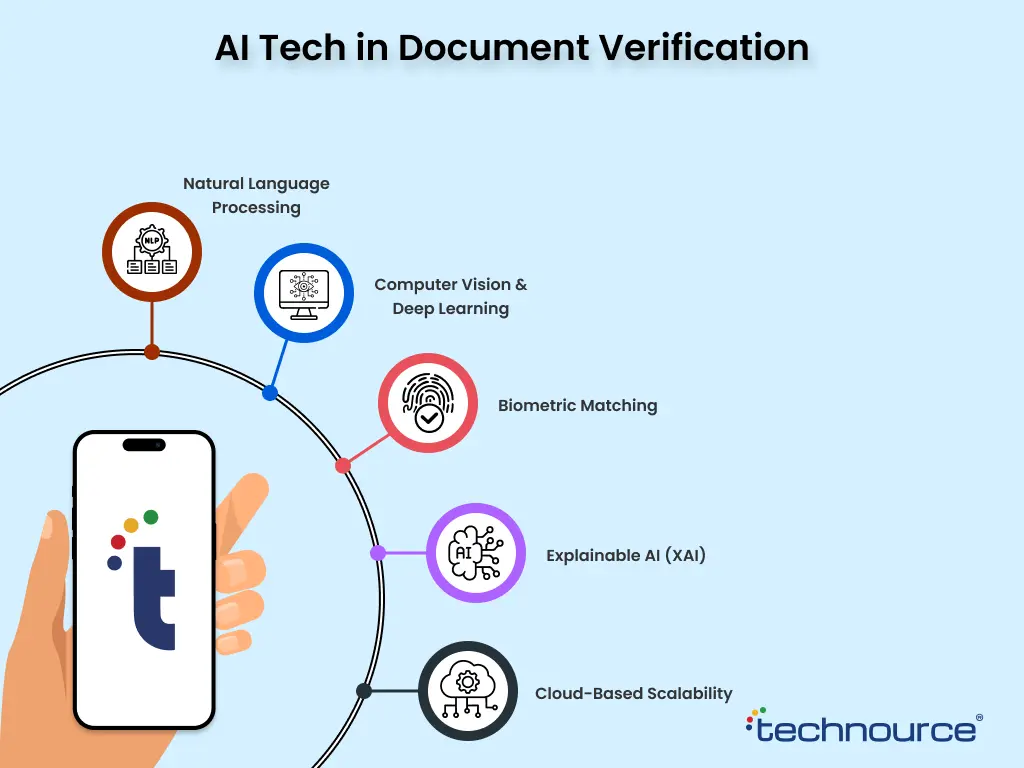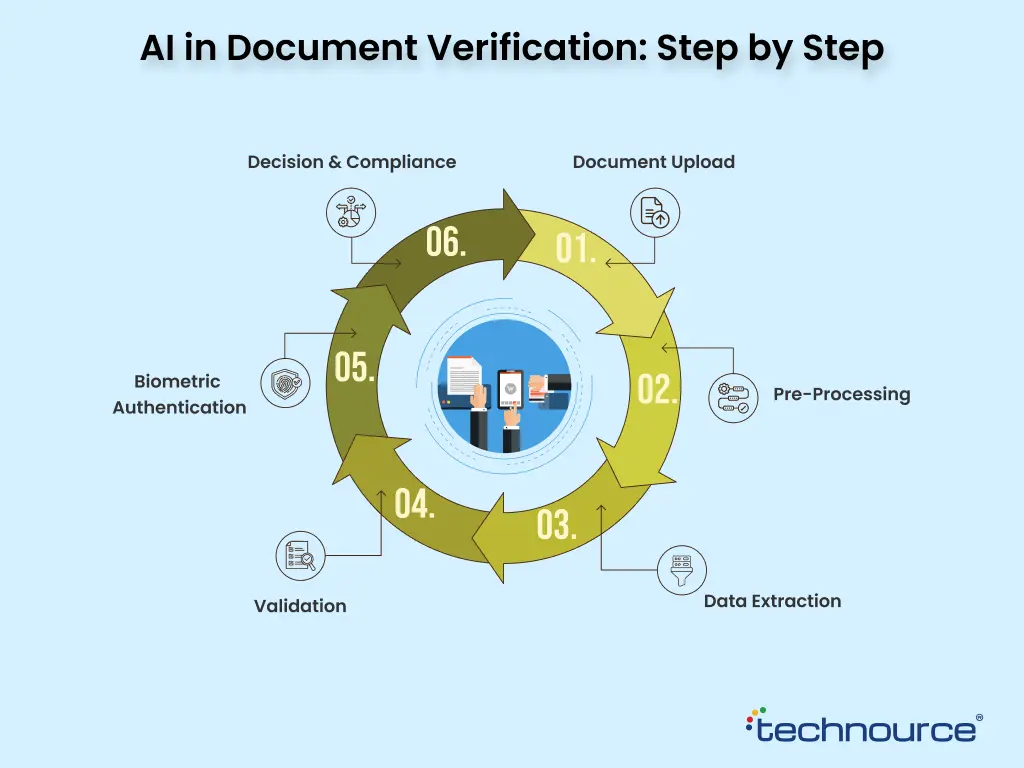The Future of Security with AI Document Verification
Quick Summary: We live in a world where a person can open a bank account from their living room, apply for a loan in minutes, or sign a business deal without ever meeting face-to-face. Convenient? Absolutely. But with convenience comes risk. Fraudulent documents, fake IDs, and identity theft are on the rise. A 2024 report by Javelin Strategy revealed that identity fraud losses reached nearly $43 billion globally. Traditional manual verification is no longer enough.That’s where AI document verification steps in. More than just a buzzword, it’s quickly becoming a frontline defense in AI identity fraud prevention, reshaping how banks, fintechs, e-commerce firms, and even governments secure identities.
In this article, I’ll explore how AI is redefining document verification, the technologies that enable it, and why it matters for the future of trust in our digital world.
I still remember sitting with a compliance officer in a mid-sized bank a few years ago. She showed me a stack of passports, all carefully laminated, with holograms, watermarks, and seals. They looked real, but three of them were forgeries. The human eye couldn’t spot it, but later an AI-based verification system caught them in seconds.
That conversation stuck with me. It made me realize that trust today isn’t built just by people checking papers across counters; it’s built by technology that can process, analyze, and secure information in real-time. This same principle applies to AI development services such as chatbot development, where intelligent systems not only answer queries but also validate, personalize, and ensure compliance seamlessly.
This is the age of artificial intelligence document validation, not a distant vision, but something happening across industries today.
Understanding Document Verification Using AI
In effect with document verification in AI uses computer vision and machine learning to verify documents like driver’s licenses, invoices, ID cards, passports, or business registrations. Unlike human judgment, manual verification, AI verifies the crevices and corners of a document, paper texture, micro-text, seals, images, and fonts, against global databases and patterns of fraud.
It’s not replacing humans; it’s about speeding up verification, making it more precise, and less prone to errors. Companies that implemented AI in identity verification reduced fraud cases by up to 30% in the first year, according to a 2023 Gartner report.
How AI Is Changing the Verification Process
Take the example of the traditional approach to it: you send a document, and it sits in a queue as it waits for someone to validate it. Hours, occasionally days. Today? An AI validation tool can verify it in under 30 seconds.
That’s what’s special:
Real-time verification: AI not only checks the photo and name; it checks for holograms, barcodes, and even tampering.
Liveness detection: When you send a selfie to be verified, AI checks that you are a real human and not a video or photo replay.
Compliance globally: Regulations such as GDPR, PSD2, and KYC regulations vary geographically. Compliance can be addressed using AI to modify onboarding accordingly.
Onfido, Jumio, and Trulioo are among the firms already leading the pack, partnering with banks, fintechs, and even travel firms.
Key AI Technologies Used in Document Verification

Let us analyze the engines behind this transformation:
Natural Language Processing (NLP) :
NLP helps systems read and extract information from documents, addresses, dates of birth, and names. NLP accounted for nearly 37% of AI adoption in fintech applications in 2024, and a survey predicted it will rise at a 39% CAGR from 2024 through 2030.
Computer Vision & Deep Learning :
AI does not merely “read” a passport; it can “look” at it. Deep learning algorithms can detect holograms, watermarks, and invisible micro-patterns.
Biometric Matching :
Identifying a live selfie with a document photograph with high accuracy. Mastercard cited that biometric authentication reduced fraud attempts by 46% in pilots.
Explainable AI (XAI) :
In highly regulated sectors such as banking, “black box AI” just won’t do. Explainable AI brings transparency, demonstrating why a document was or was not authenticated, making it audit-proof and compliant.
Cloud-Based Scalability :
As 72% of verification platforms are cloud-based, organizations from startups to large banks can simply scale verification.
Step-by-Step: How AI-Based Document Verification Works
Here is how a typical flow appears:
- Document Upload – The customer uploads his/her ID.
- Pre-Processing – AI enhances the look of images, deblurs, and corrects lighting.
- Data Extraction – NLP derives structured data like name, address, and expiry date.
- Validation The system checks security features (holograms, fonts, barcodes) against established standards.
- Biometric Authentication – A live video or selfie confirms the document belongs to the user.
- Decision & Compliance – AI produces a confidence score, flags risk, and captures results for audit.
What a compliance team might only manage to do in 30 minutes can now be accomplished in 30 seconds with 99% precision.
Benefits of AI in Document Verification
Speed: Onboarding customers takes days down to minutes.
Accuracy: AI minimizes human error, detecting minor forgeries.
Fraud Reduction: McKinsey estimates the financial losses due to fraud at a possible $150 billion annually, industry-wide, because of AI.
Scalability: 100 or 1 million verifications, AI in fintech systems scale without bottlenecks.
Confidence: Assists in satisfying changing eKYC solutions automatically.
Industries Utilizing AI Document Verification
- Banking & Fintech → From KYC onboarding to AI for fraud detection, things are becoming seriously essential.
- Travel & Hospitality → Verifying passports for faster check-ins and boarding.
- E-commerce & Marketplaces → Ensuring sellers and buyers are who they claim to be.
- Healthcare → Validating insurance documents and patient IDs.
- Government Services → National ID programs are moving toward large-scale AI-based document authentication.
Challenges and Considerations
Of course, AI isn’t perfect. Some challenges remain:
- Bias & Accuracy Gaps: Poorly trained models may not perform well with some document types.
- Privacy Concerns: The storage of sensitive data poses security concerns.
- Regulatory Complexity: Varying compliance requirements exist from country to country.
- Integration Costs: Legacy systems in banks or governments may be resistant to new tech.
That’s why choosing the right development partner following the perfect software development process matters the most.
Latest Trends & The Future of AI Document Verification
The future isn’t about AI replacing humans; it’s about humans working with AI. Here’s what’s next:
- AI-Powered Identity Verification: Using GenAI to simulate fake documents and train systems against them.
- Decentralized Identity Verification: Blockchain-based systems for tamper-proof identity sharing.
- Cross-Industry Adoption: From real estate rentals to online education platforms, more sectors will adopt AI verification.
- Enhanced Biometric Fusion: Combining voice, facial, and fingerprint checks into one unified process.
Conclusion
The future of security isn’t about thicker paper, shinier holograms, or stricter manual checks. It’s about building trust at digital speed. AI-powered document verification gives us that edge: real-time checks, stronger fraud defense, and global compliance.
For leaders in finance, tech, or government, the question is no longer “Should we adopt AI verification?” but “How fast can we integrate it before threats outpace us?”
As someone who has seen both the risks of manual verification and the confidence AI brings, I believe this shift is not just about emerging technologies; it’s about building trust in a borderless, digital-first economy. At Technource, we’ve partnered with fintech firms, compliance-driven organizations, and forward-looking enterprises to implement AI solutions that not only meet regulations but also redefine user trust. That experience convinces me: the future of document security will be written by those who embrace AI early and responsibly.
FAQs
It’s the use of machine learning and computer vision to validate documents like IDs, passports, or utility bills in real time. By automated KYC verification, reducing fraud, and ensuring compliance with global regulations quickly AI in KYC process becomes helpful. Yes, when implemented with encryption and compliance standards. Leading providers meet GDPR and ISO certifications. It analyzes micro-details, fonts, holograms, image quality, and biometric matches against global fraud databases. Most government-issued IDs, passports, and licenses can be verified. Some niche documents may require manual review.
Request Free Consultation
Amplify your business and take advantage of our expertise & experience to shape the future of your business.










